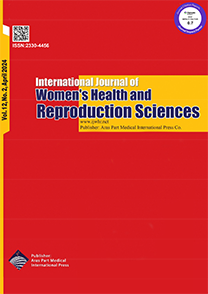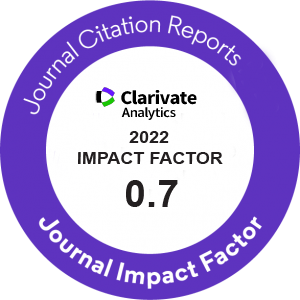| Original Article | |
| Antitumor Effect of Lavandula angustifolia Extracts on the MDA-MB-231 Breast Cancer Cell Line, With Emphasis on the Inhibition of Histone Deacetylase: In Vitro Evaluation and Molecular Docking Studies | |
| Mitra Javanmardi1, Mohammad-Karim Khosropanah1, Mohammad Abdi2,3 | |
| 1Department of Biology, Sanandaj Branch, Islamic Azad University, Sanandaj, Iran 2Cellular and Molecular Research Center, Research Institute for Health Development, Kurdistan University of Medical Sciences, Sanandaj, Iran 3Department of Clinical Biochemistry, Faculty of Medicine, Kurdistan University of Medical Sciences, Sanandaj, Iran |
|
|
DOI: 10.15296/ijwhr.2023.8007 Viewed : 238 times Downloaded : 321 times. Keywords : Antitumor activity, Lavandula angustifolia, Breast cancer cell line, Docking study, MDA-MB-231 |
|
| Full Text(PDF) | Related Articles | |
| Abstract | |
Objectives: Complementary medicine for the treatment of breast cancer has received a considerable research attention over the past years. Studies have also shown the anti-proliferative properties of Lavandula angustifolia. This study aimed to investigate the likely anti-proliferative effects of n-hexane, ethyl acetate, and methanol extracted from L. angustifolia on a cell line of the breast cancer. Materials and Methods: The MDA-MB-231 cell line was treated with different concentrations of three extracts from L. angustifolia. MTT assay was performed to evaluate cell viability, and flow cytometry was used to examine the cell cycle. The potential of the breast cancer cell line to form the colonies after a treatment with the plant extract was also investigated. The matrix metalloproteinase 2 and 9 (MMP2 and 9) were measured by quantitative real-time polymerase chain reaction (qPCR). Molecular docking was performed using AutoDock Vina in PyRx0.8 to investigate the likely target protein. Results: The results showed that the methanol extract had considerable cytotoxicity to MDA-MB-231. The G0/G1 phase arrest was significantly increased in MDA-MB-231 after treatment with methanol extract. Furthermore, MMP2 and 9 significantly down-regulated the post treatment with the plant extract. The docking energy (kcal.mol-1) of eight methanolic extract compounds was docked with the histone deacetylase (HDAC), and nine transcription factors were achieved. Conclusions: In sum, a cytotoxic property was determined for L. angustifolia methanol extract on the MDA-MB-231. According to the results from docking studies, the best compound among the investigated compounds was 2-furancarboxaldehyde, which was docked with HDAC with a –7.37 kcal.mol-1 docking score. Therefore, it was recommended that future studies should be carried out to further investigate L. angustifolia as a possible complementary treatment. |
Cite By, Google Scholar
Online Submission System
 IJWHR ENDNOTE ® Style
IJWHR ENDNOTE ® Style
 Tutorials
Tutorials
 Publication Charge
Women's Reproductive Health Research Center
About Journal
Publication Charge
Women's Reproductive Health Research Center
About Journal
Aras Part Medical International Press Editor-in-Chief
Arash Khaki
Mertihan Kurdoglu Deputy Editor
Zafer Akan






















